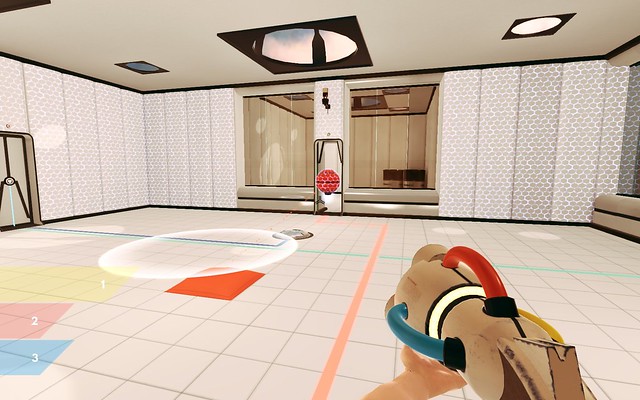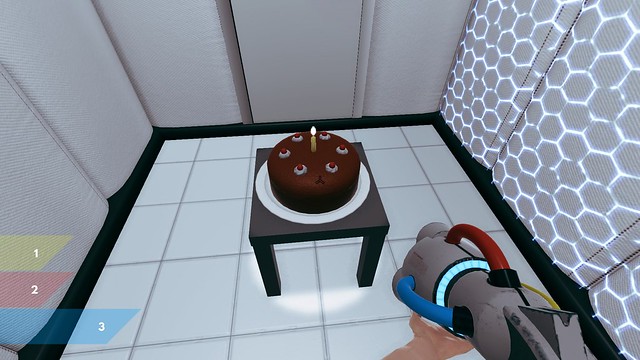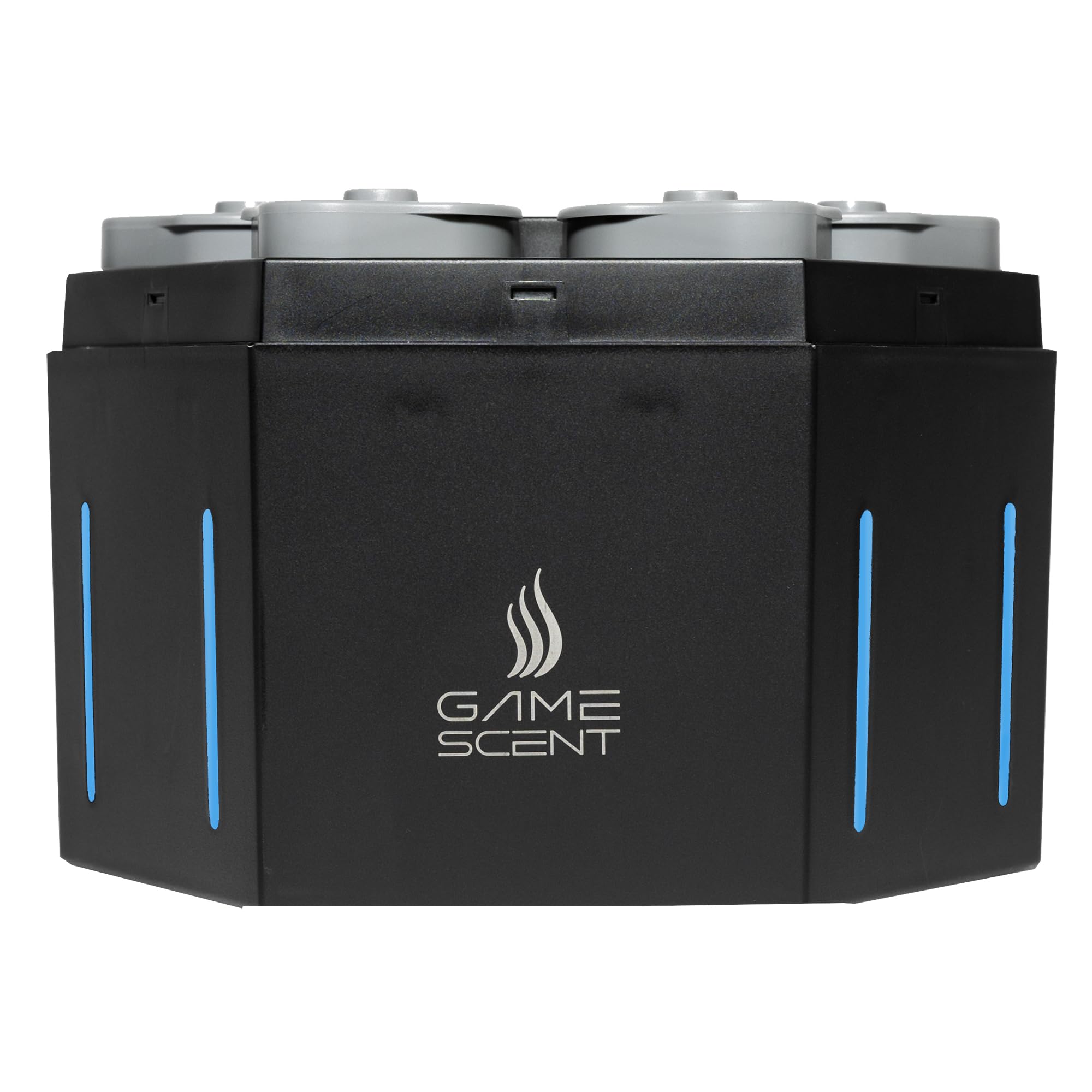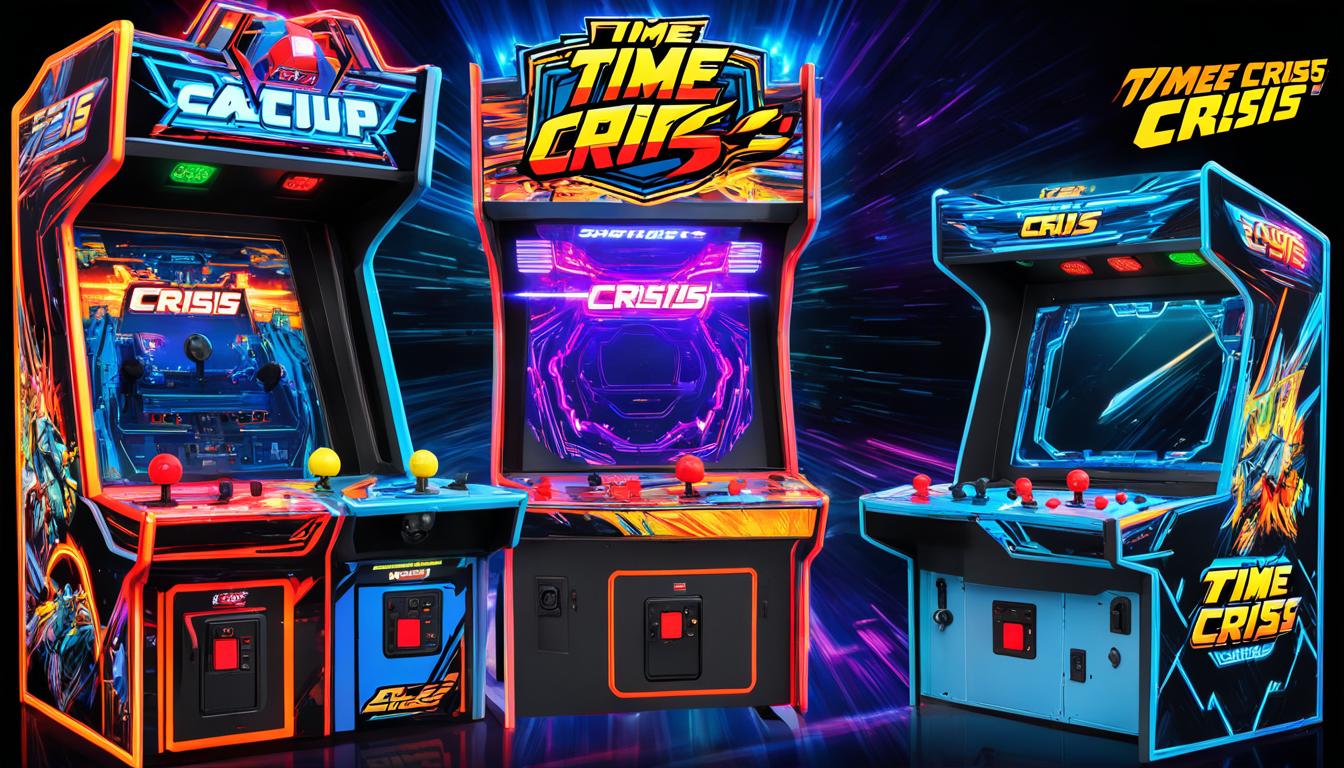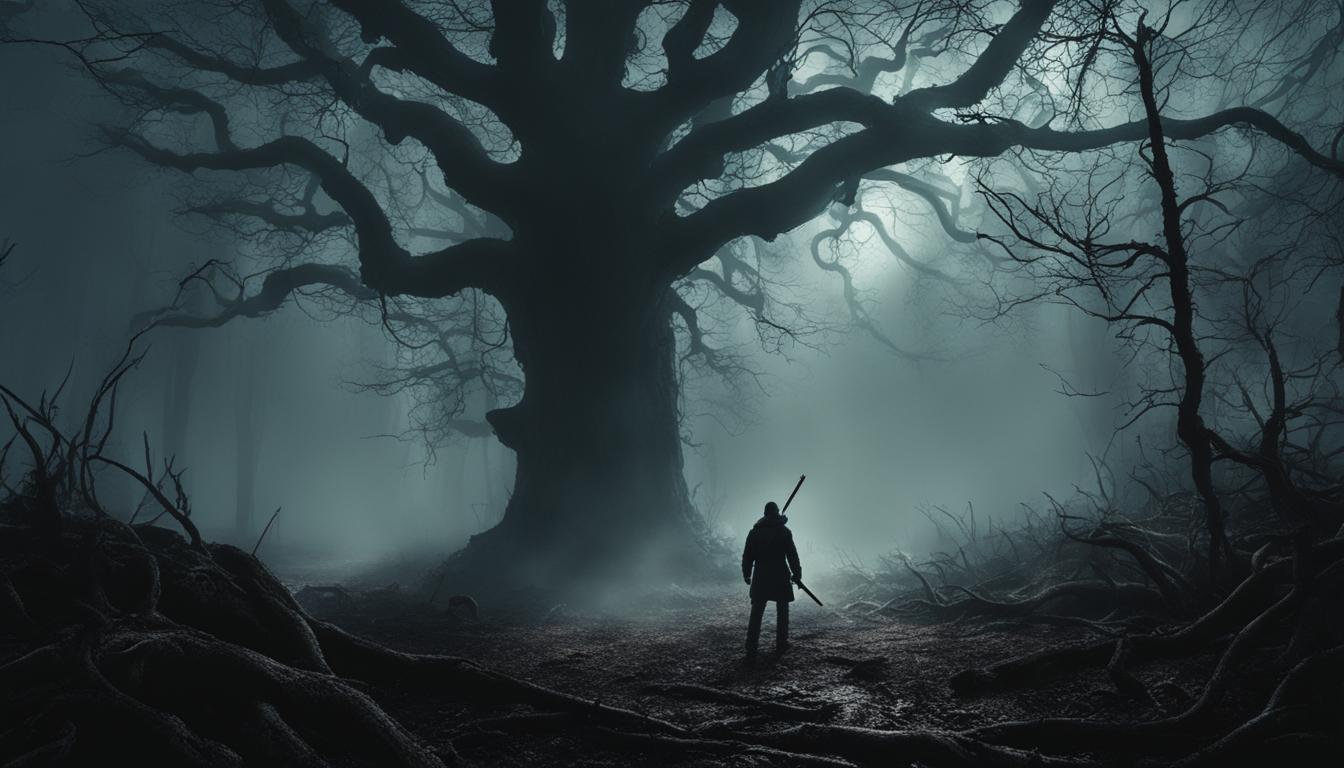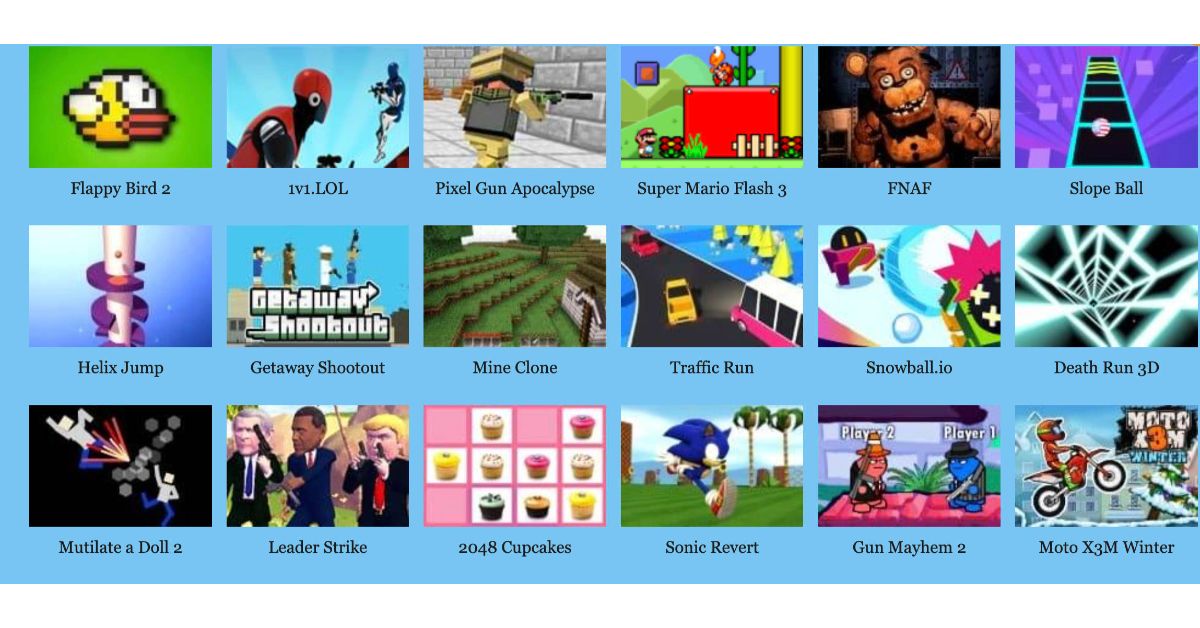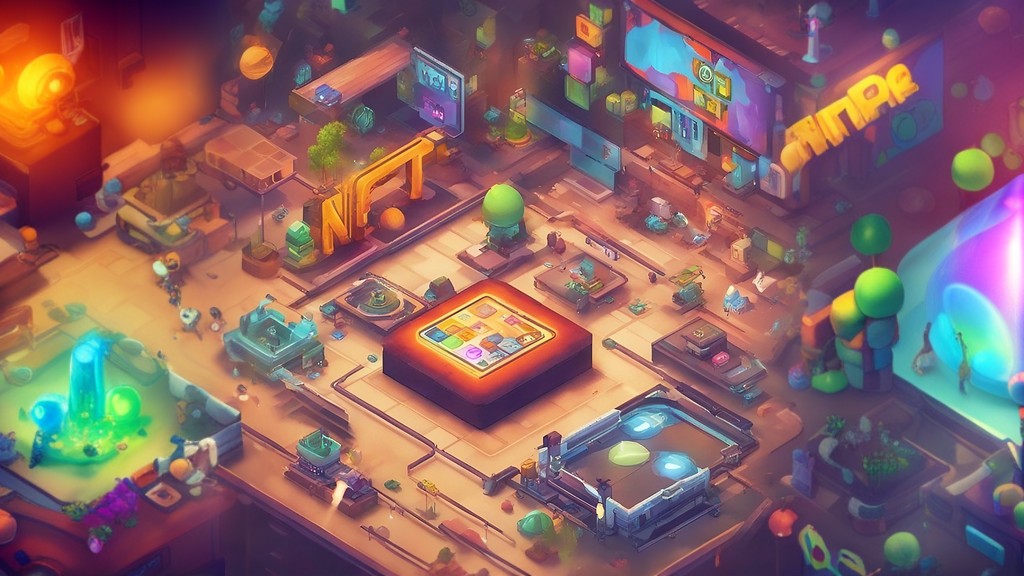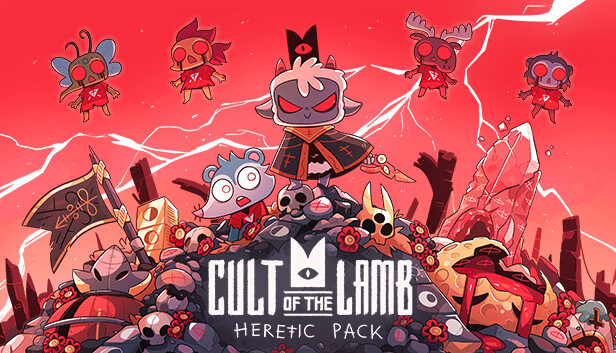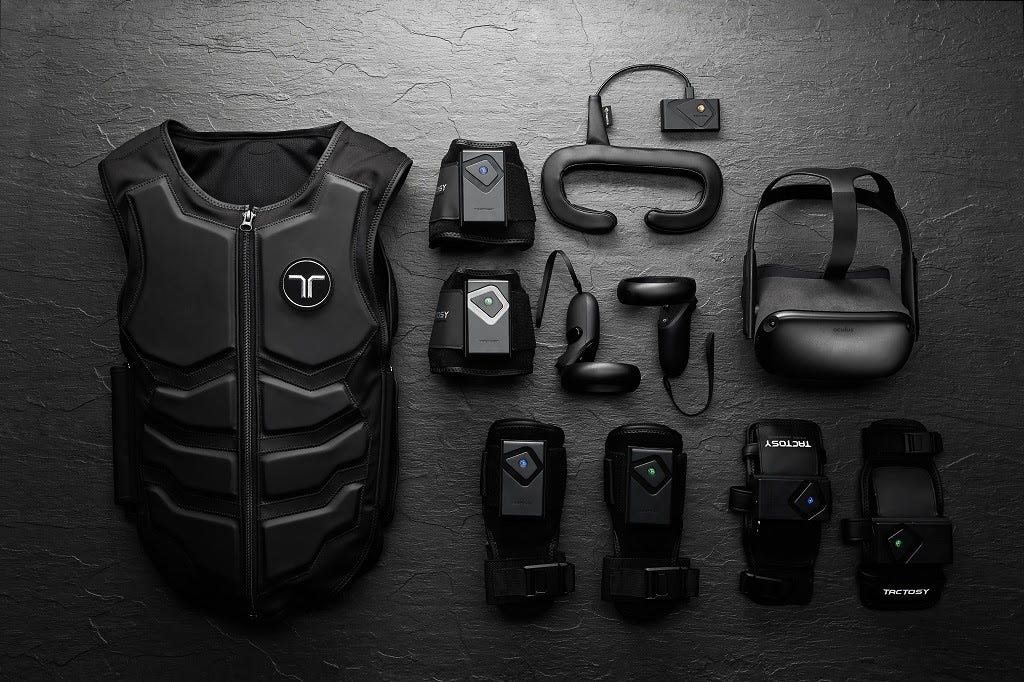[Disclosure: A review copy was provided for the contents of the article]
If you placed Portal and Chromagun side by side, then I suspect a non-gamer wouldn’t be able to tell the difference. Even for me, there are only the subtlest of changes. Chromagun‘s main weapon is certainly different, but not drastically so, with just three colourful pipes that distinguish from the portal gun. Everything else, from the story itself to the sanitised laboratory setting and even the comedy narrator in between is almost identical, although that isn’t necessarily a bad thing.
Specifically where Chromagun is concerned, the player is an average Joe who walks in off the street and volunteers for an experiment in order to turn a quick buck. He’s immediately armed with a gun that shoots the three primary colours (red, yellow, blue) which he must use to solve puzzles by shooting particular surfaces and objects, sometimes more than once (in order to mix the correct secondary colour.) Be careful though, shoot a surface again and the paint simply turns brown, which will usually result in having to restart the level.
Much like Portal, Chromagun eases players gently into its puzzle room concept. The Chromagun can paint patterns on the floor to move drones (aka WorkerDroids) of matching colours around so that they can activate floor panels that will ultimately open the exit door. At first, it’s that simple – but things soon escalate. Walls that “degauss” the paint that you stick on them, drones that attack you and all manner of hazardous traps and surfaces.
Levels do become progressively more challenging as the game continues, although the difficulty curve peaks and troughs a little bit more than I would like. There are levels later in the game that I just didn’t find hard (probably because they were more like pure puzzles than dexterity or threat based challenges) whilst some of the early levels that feature aggressive robots were tougher until I took stock and worked them out from a safe distance.
I mentioned earlier that shooting a surface multiple times can turn it brown and render it useless. Whilst it is thematically accurate, this tends to feel a little unfair as levels become more complex. Sometimes, panels are directly adjacent to each other and shots must be taken from tight angles or when moving, which feels less like a challenge and more like a punishment. Hazards can also damage or kill the WorkerDroids as you direct them, which often means that you’ll fail rooms because of one tiny error of judgement.
I guess that both of those things are just par for the course really, because it’s not like Portal was entirely without some of these issues. It must be challenging to design a fairly complex puzzle game that has an appropriately scaled level of difficulty to please everyone. The narrator does occasionally offer hints and tips (as well as disparaging remarks when you die or fail) but the solutions to puzzles are rarely the problem, actually achieving the necessary sequence to complete them is.
Although it does have a few issues, including the fact that it is incredibly similar in design and appearance to one of the most innovative and popular puzzle games ever, Chromagun is still a great game. Completing levels is almost always very satisfying (especially the tough ones) and considering that I’m reviewing it on the Nintendo Switch, it works superbly for handheld play. Chromagun doesn’t outstay its welcome, ensuring that the good ideas outweigh the slightly spiky difficulty, so I recommend that you:

